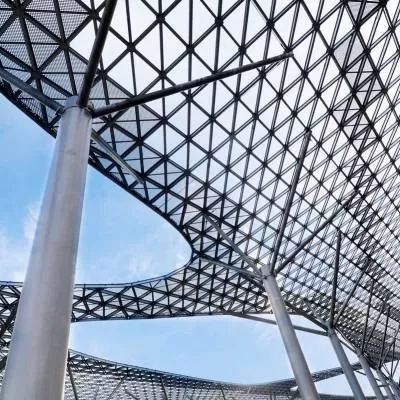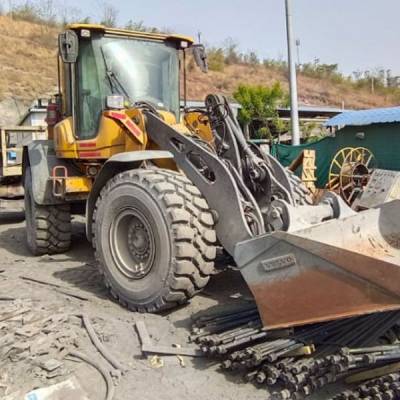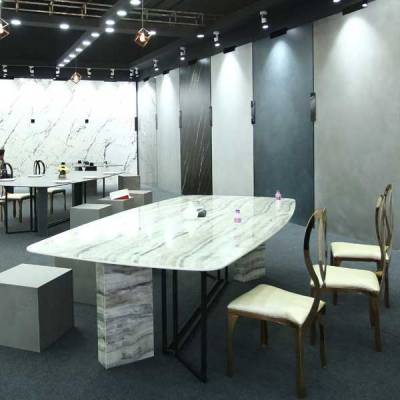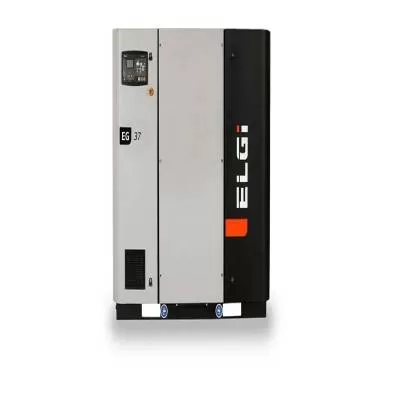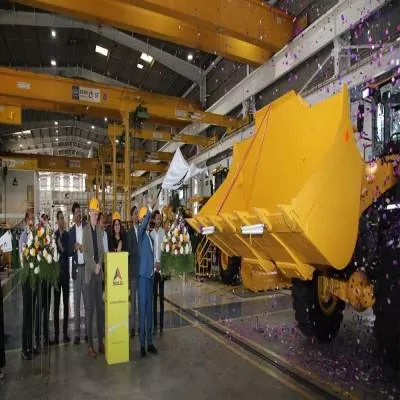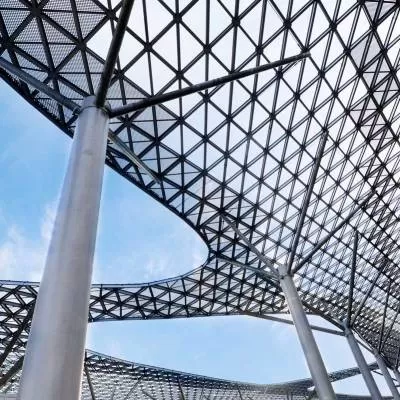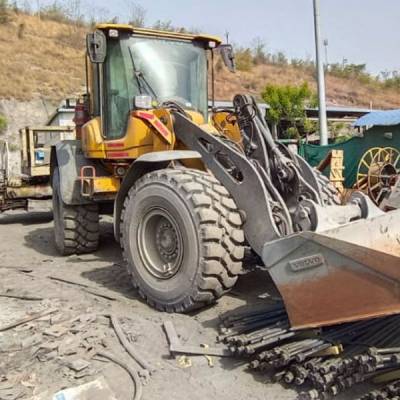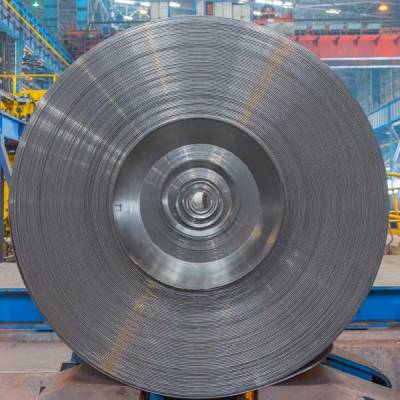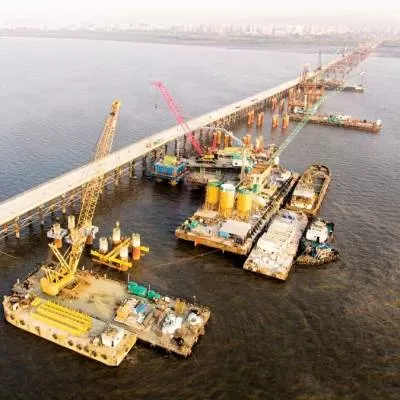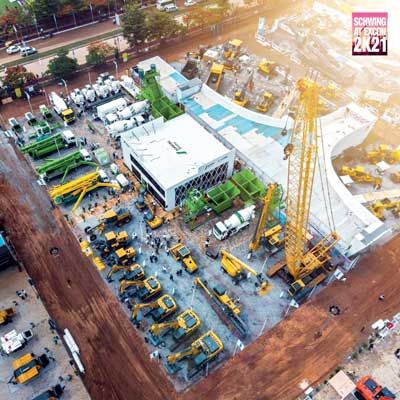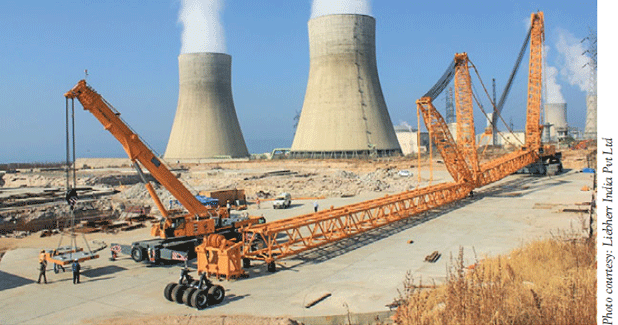
Handling Success
Material handling equipment´s major product lines are pick & carry cranes, forklift trucks, rough-terrain cranes, truck-mounted cranes, crawler cranes, tower cranes, reach stackers, lorry loaders and aerial work platforms. ´Pick & carry cranes, a completely Indian product, enjoys the largest section of the pie,´ says Manoj Agarwal, Business Head-Material Handling, Escorts Ltd-Construction Equipment. Material handlers make up a huge market in India. ´Last year, consumers demanded close to 100 crawler cranes, 15-20 all-terrain cranes, 70 rough terrain cranes, 140 truck cranes and over 5,000 pick & carry cranes,´ says Ajay Kumar Somani, Director, Mobile Crane Division, Liebherr India Pvt Ltd.
Near-term prospects
Overall, business sentiment is positive.
´On the back of the new Government´s emphasis on infrastructure development and revival of manufacturing and allied industries, ElectroMech expects the material handling sector to grow at 20-25 per cent annually over the next few years´ opines Tushar Mehendale, Managing Director, ElectroMech.
´With an overall positive outlook for the India market and a strong product line-up, Manitowoc is looking forward to reinforcing its position in India in 2015,´ says Raman Joshi, Managing Director, Manitowoc Cranes India.
´We expect 20-25 per cent growth in the current year,´ says Somani. ´China manufactures about 100,000 forklifts versus 5,000 produced per year in India,´ says Pradeep Sharma, President, ACE Cranes. ´That shows the great opportunity in the Indian material handling equipment industry, especially with the Government´s thrust on Make in India.´
But growth has yet to pick up pace.
´We are still waiting for good times to come,´ says Agarwal. ´Projects are being announced but activity on the ground is slow. We expect projects to be up and running in the next six months.´
Sectors to watch out for
While metro rail, road and bridge projects, power and oil & gas sectors are currently driving demand, Sood expects infrastructure projects and the power sector to drive demand in the future.
´Wind power is an emerging driver for demand for mobile cranes of capacity over 200 tonne,´ says Sanjay Desai, Independent Consultant-Industrial, Construction and Mining Equipment and Commercial Vehicles.
´Wind power generation projects, cement plants, new refineries and expansion of refineries projects are driving demand for crawler cranes and mobile cranes,´ shares Somani. ´Tower crane demand is being driven by real estate and airport modernisation projects.´
Mehendale expects the power, infrastructure construction and heavy engineering sectors to witness huge momentum. ´This means demand will grow for gantry cranes from the infrastructure sector and for single or double-girder overhead cranes from manufacturing facilities,´ he clarifies.
´Watch out for demand from the power sector; urban infrastructure like freight corridors, city metro, rail networks and smart cities; the manufacturing sector (Make in India philosophy); and automation across developing sectors like beverages and processing units,´ says Agarwal.
Popular models
Demand for various products differs according to their scope of application. ´In the pick & carry crane category, the 14-tonne model is the most popular capacity,´ explains Agarwal. ´In forklift trucks, the 3 tonne is the most commonly used. And in higher capacity cranes, 40 tonne is the most accepted capacity. Special activities need special sizes.´ ´Demand is highest for mobile cranes up to 80 tonne and crawler cranes up to 260 tonne,´ adds Somani. ´Demand for mobile cranes above 100 tonne and crawler cranes above 400 tonne is project-specific and sector performance-specific, and hence more volatile.´
´Pick & carry cranes of 10-15 tonne and domestically manufactured 25-80 tonne hydraulic mobile cranes are the fastest moving products,´ says Amit Sood, Assistant Vice President, Material Handling Solutions Division, TIL Ltd. ´Increased export and import activity and containerisation of goods movement is boosting demand for reach stackers. Hyster-TIL ReachStackers lead this market.´
´In the forklifts category, 3 tonne and 5-tonne models constitute 75 per cent of the market,´ says Sharma. ´In the pick & carry segment, 12 tonne and 14 tonne models account for 65 per cent of the market while in crawler cranes, the 75 tonne model enjoys the major share. In tower cranes, most construction sites deploy 6 tonne models.´
As the industry evolves, different models are expected to push ahead. ´With the prefab concept picking up, market demand for tower cranes of 10 tonne and above is expected to considerably pick up,´ opines Sharma. New infra projects will push demand for tower cranes in the 10-20 tonne category. We are prepared to indigenously supply any tower crane from 1.6 tonne to 20 tonne capacity.´
Sharma also expects rental and equipment leasing to drive domestic future growth. ´Rentals currently account for just 2 per cent of the market,´ he points out. ´Scope also exists in equipment financing and end-to-end services covering the equipment life-cycle-financing, user training, maintenance and buy-back of used equipment.´
Innovation drives new line-up
Articulated pick & carry cranes are popular but known to be one of the most unsafe products in operation as they are prone to toppling and other kinds of accidents. To facilitate the safe implementation of the sort of activities such cranes support, TIL has introduced a unique 15 tonne multitasking hydraulic mobile crane called PIXEF. ´It is capable of slew, pick & carry and carry deck applications,´ elaborates Sood. ´PIXEF won the prestigious ´India Design Mark´ award for Good Design last year. It is a versatile machine ensuring high level of productivity, performance and the best safety standards in the segment.´ He expects demand for this indigenous product to grow substantially. ´Buying ´Made in India´ products featuring the latest technology offers the lowest life-cycle cost,´ he adds. ´Customers also get the benefit of a strong service support network.´
Recent innovations from ElectroMech include customised solutions for high-speed, high lift tunnel mucking, stacker cranes and single-failure proof cranes for the nuclear power sector.
To stay abreast of demand for pick & carry cranes, ACE has recently launched new-generation models featuring front-mounted cabins offering better visibility, improved stability, industrial driveline from trucks for improved gear shifting, better operator comfort and higher speeds and operator-friendly wheel steering.
At Manitowoc Cranes India, innovation is aimed at increasing value for customers. ´We produce cranes that are more productive and profitable for our customers, and that can improve return on investment,´ says Joshi. A recent launch is the topless model MCT 205 Potain tower crane with 10 tonne maximum capacity. It can lift 1.75 tonne at its maximum jib end of 65 m. With a focus on fast erection, the complete upper works for the MCT 205 can be assembled in four lifts. The heaviest group of components is just 7.9 tonne and the full 65 m jib can be placed in a single lift. It can be operated as an internal climbing crane, positioned within the building it is constructing. Zafar Shamsi of Talib & Shamsi Constructions Pvt Ltd has bought the MCT 205 for its strength, ease of assembly and great control ability. ´It will enable us to keep pace with the growing time pressures of job sites in India,´ he says. Manitowoc has also launched the topless model Potain MCT 85 with 5 tonne maximum capacity. It can lift 1.1 tonne at its jib end of 52 m. It needs just two trucks to transport the entire top portion of the crane. Sarubh Jangle, Director, SJ Contracts Pvt Ltd, an early buyer, is taken up with the MCT 85´s ability to be erected at free-standing heights of up to 47 m - ´which means we can go higher than other cranes in this class without needing to tie the crane to the building. This saves us time and money.´
Opportunity gaps
Despite the availability of a wide range of material handling equipment, gaps exist in the market.
´Luffing cranes is a segment where a gap exists,´ says Amjad Shamsi, Managing Director, Talib & Shamsi Constructions Pvt Ltd. ´A smaller 6 to 8 mt version should be made in India.´
´We see a gap in the self-erecting cranes category in India, But these cranes offer greater efficiency for building operations because they can be used from the first day of a project-moving materials or pouring concrete-and they are easy to move around site,´ says Joshi.
To fill this gap, Manitowoc offers the Potain Igo 26 self-erecting crane with 3.2 tonne maximum capacity and a working hook height of 20 m. ´It is an ideal machine for smaller construction projects and sites,´ explains Joshi.
Shamsi is appreciative of the IGO´s hydraulic mechanism and hopes Manitowoc will soon start to manufacture the IGO here as the landed price of imported products is a deterrent. ´A very large market exists for self-erecting cranes in India,´ explains Shamsi. ´At present, it is being serviced by manufacturers like Alpha and Ace. But their models don´t come with any hydraulics. They are manual and hence take four days to relocate. The hydraulic Potain IGO can be relocated in a few hours.´ Very large markets offer something for everyone.
Quick Bytes
Material handling sector to grow at 20-25% annually.
Rental, equipment leasing to drive domestic growth.
Pick & carry cranes are most popular.
There is a supply gap in self-erecting cranes category.
Crane stats
- Industrial cranes market in India currently worth Rs.1,500 crore to Rs.1,800 crore per annum
- Anticipated growth: Rs.2,000 crore to Rs.2,200 crore in the next few years.
- Demand for cranes: 30% from government-owned companies, 70% from the private sector
- Private sector demand by region: Western India contributes 50-55%, Southern India 20-25%, Northern India 15-20%, and Eastern India 5-10%
- Centralised as well as fragmented organised cranes industry: A handful of leaders enjoy 40% of the total market; over 250 small companies share the rest of the pie.
Source: ElectroMech
How do Indian models stack up against overseas models?
´Cranes from multinational companies are far superior to those from Indian companies in their design, productivity and safety features. Traditionally safety in construction equipment hasn´t been emphasised in India, apart from a few areas like power stations where certification is mandatory. Productivity per machine is a major field of study overseas but not focused on so deeply in India. That overseas companies offer specialised material handlers for different applications, shows how much they product design. Premium products usually command a price advantage of 20-25 per cent.
In the case of specialised equipment from overseas countries like the US and European nations, the price differential can go up to 45 per cent.
Products from China can even be cheaper than local products by up to 25-30 per cent because of the strong support of their government for overseas trade expansion.´
- CHARU BAHRI
To share your views on Material Handling Equipment, write in at feedback@constructionworld.in
- CHARU BAHRI
- Material Handling Equipment
- Manoj Agarwal
- Escorts Ltd
- Construction
- Equipment
- Ajay Kumar Somani
- Mobile Crane
- ElectroMech
- Tushar Mehendale
- Raman Joshi
- Manitowoc Cranes India
- Pradeep Sharma
- ACE Cranes
- Sanjay Desai
- Mining Equipment
- Commercial Vehicles
- Amit Sood
- TIL Ltd
- PIXEF
- Made in India
- Manitowoc Cranes India
- Zafar Shamsi of Talib & Shamsi Constructions Pvt Ltd
- Sarubh Jangle
- SJ Contracts Pvt Ltd
- Amjad Shamsi
- ElectroMech
Product innovations and burgeoning demand from emerging and traditional takers promise to grow the material handling equipment segment. Material handling equipment´s major product lines are pick & carry cranes, forklift trucks, rough-terrain cranes, truck-mounted cranes, crawler cranes, tower cranes, reach stackers, lorry loaders and aerial work platforms. ´Pick & carry cranes, a completely Indian product, enjoys the largest section of the pie,´ says Manoj Agarwal, Business Head-Material Handling, Escorts Ltd-Construction Equipment. Material handlers make up a huge market in India. ´Last year, consumers demanded close to 100 crawler cranes, 15-20 all-terrain cranes, 70 rough terrain cranes, 140 truck cranes and over 5,000 pick & carry cranes,´ says Ajay Kumar Somani, Director, Mobile Crane Division, Liebherr India Pvt Ltd. Near-term prospects Overall, business sentiment is positive. ´On the back of the new Government´s emphasis on infrastructure development and revival of manufacturing and allied industries, ElectroMech expects the material handling sector to grow at 20-25 per cent annually over the next few years´ opines Tushar Mehendale, Managing Director, ElectroMech. ´With an overall positive outlook for the India market and a strong product line-up, Manitowoc is looking forward to reinforcing its position in India in 2015,´ says Raman Joshi, Managing Director, Manitowoc Cranes India. ´We expect 20-25 per cent growth in the current year,´ says Somani. ´China manufactures about 100,000 forklifts versus 5,000 produced per year in India,´ says Pradeep Sharma, President, ACE Cranes. ´That shows the great opportunity in the Indian material handling equipment industry, especially with the Government´s thrust on Make in India.´ But growth has yet to pick up pace. ´We are still waiting for good times to come,´ says Agarwal. ´Projects are being announced but activity on the ground is slow. We expect projects to be up and running in the next six months.´ Sectors to watch out for While metro rail, road and bridge projects, power and oil & gas sectors are currently driving demand, Sood expects infrastructure projects and the power sector to drive demand in the future. ´Wind power is an emerging driver for demand for mobile cranes of capacity over 200 tonne,´ says Sanjay Desai, Independent Consultant-Industrial, Construction and Mining Equipment and Commercial Vehicles. ´Wind power generation projects, cement plants, new refineries and expansion of refineries projects are driving demand for crawler cranes and mobile cranes,´ shares Somani. ´Tower crane demand is being driven by real estate and airport modernisation projects.´ Mehendale expects the power, infrastructure construction and heavy engineering sectors to witness huge momentum. ´This means demand will grow for gantry cranes from the infrastructure sector and for single or double-girder overhead cranes from manufacturing facilities,´ he clarifies. ´Watch out for demand from the power sector; urban infrastructure like freight corridors, city metro, rail networks and smart cities; the manufacturing sector (Make in India philosophy); and automation across developing sectors like beverages and processing units,´ says Agarwal. Popular models Demand for various products differs according to their scope of application. ´In the pick & carry crane category, the 14-tonne model is the most popular capacity,´ explains Agarwal. ´In forklift trucks, the 3 tonne is the most commonly used. And in higher capacity cranes, 40 tonne is the most accepted capacity. Special activities need special sizes.´ ´Demand is highest for mobile cranes up to 80 tonne and crawler cranes up to 260 tonne,´ adds Somani. ´Demand for mobile cranes above 100 tonne and crawler cranes above 400 tonne is project-specific and sector performance-specific, and hence more volatile.´ ´Pick & carry cranes of 10-15 tonne and domestically manufactured 25-80 tonne hydraulic mobile cranes are the fastest moving products,´ says Amit Sood, Assistant Vice President, Material Handling Solutions Division, TIL Ltd. ´Increased export and import activity and containerisation of goods movement is boosting demand for reach stackers. Hyster-TIL ReachStackers lead this market.´ ´In the forklifts category, 3 tonne and 5-tonne models constitute 75 per cent of the market,´ says Sharma. ´In the pick & carry segment, 12 tonne and 14 tonne models account for 65 per cent of the market while in crawler cranes, the 75 tonne model enjoys the major share. In tower cranes, most construction sites deploy 6 tonne models.´ As the industry evolves, different models are expected to push ahead. ´With the prefab concept picking up, market demand for tower cranes of 10 tonne and above is expected to considerably pick up,´ opines Sharma. New infra projects will push demand for tower cranes in the 10-20 tonne category. We are prepared to indigenously supply any tower crane from 1.6 tonne to 20 tonne capacity.´ Sharma also expects rental and equipment leasing to drive domestic future growth. ´Rentals currently account for just 2 per cent of the market,´ he points out. ´Scope also exists in equipment financing and end-to-end services covering the equipment life-cycle-financing, user training, maintenance and buy-back of used equipment.´ Innovation drives new line-up Articulated pick & carry cranes are popular but known to be one of the most unsafe products in operation as they are prone to toppling and other kinds of accidents. To facilitate the safe implementation of the sort of activities such cranes support, TIL has introduced a unique 15 tonne multitasking hydraulic mobile crane called PIXEF. ´It is capable of slew, pick & carry and carry deck applications,´ elaborates Sood. ´PIXEF won the prestigious ´India Design Mark´ award for Good Design last year. It is a versatile machine ensuring high level of productivity, performance and the best safety standards in the segment.´ He expects demand for this indigenous product to grow substantially. ´Buying ´Made in India´ products featuring the latest technology offers the lowest life-cycle cost,´ he adds. ´Customers also get the benefit of a strong service support network.´ Recent innovations from ElectroMech include customised solutions for high-speed, high lift tunnel mucking, stacker cranes and single-failure proof cranes for the nuclear power sector. To stay abreast of demand for pick & carry cranes, ACE has recently launched new-generation models featuring front-mounted cabins offering better visibility, improved stability, industrial driveline from trucks for improved gear shifting, better operator comfort and higher speeds and operator-friendly wheel steering. At Manitowoc Cranes India, innovation is aimed at increasing value for customers. ´We produce cranes that are more productive and profitable for our customers, and that can improve return on investment,´ says Joshi. A recent launch is the topless model MCT 205 Potain tower crane with 10 tonne maximum capacity. It can lift 1.75 tonne at its maximum jib end of 65 m. With a focus on fast erection, the complete upper works for the MCT 205 can be assembled in four lifts. The heaviest group of components is just 7.9 tonne and the full 65 m jib can be placed in a single lift. It can be operated as an internal climbing crane, positioned within the building it is constructing. Zafar Shamsi of Talib & Shamsi Constructions Pvt Ltd has bought the MCT 205 for its strength, ease of assembly and great control ability. ´It will enable us to keep pace with the growing time pressures of job sites in India,´ he says. Manitowoc has also launched the topless model Potain MCT 85 with 5 tonne maximum capacity. It can lift 1.1 tonne at its jib end of 52 m. It needs just two trucks to transport the entire top portion of the crane. Sarubh Jangle, Director, SJ Contracts Pvt Ltd, an early buyer, is taken up with the MCT 85´s ability to be erected at free-standing heights of up to 47 m - ´which means we can go higher than other cranes in this class without needing to tie the crane to the building. This saves us time and money.´ Opportunity gaps Despite the availability of a wide range of material handling equipment, gaps exist in the market. ´Luffing cranes is a segment where a gap exists,´ says Amjad Shamsi, Managing Director, Talib & Shamsi Constructions Pvt Ltd. ´A smaller 6 to 8 mt version should be made in India.´ ´We see a gap in the self-erecting cranes category in India, But these cranes offer greater efficiency for building operations because they can be used from the first day of a project-moving materials or pouring concrete-and they are easy to move around site,´ says Joshi. To fill this gap, Manitowoc offers the Potain Igo 26 self-erecting crane with 3.2 tonne maximum capacity and a working hook height of 20 m. ´It is an ideal machine for smaller construction projects and sites,´ explains Joshi. Shamsi is appreciative of the IGO´s hydraulic mechanism and hopes Manitowoc will soon start to manufacture the IGO here as the landed price of imported products is a deterrent. ´A very large market exists for self-erecting cranes in India,´ explains Shamsi. ´At present, it is being serviced by manufacturers like Alpha and Ace. But their models don´t come with any hydraulics. They are manual and hence take four days to relocate. The hydraulic Potain IGO can be relocated in a few hours.´ Very large markets offer something for everyone. Quick Bytes Material handling sector to grow at 20-25% annually. Rental, equipment leasing to drive domestic growth. Pick & carry cranes are most popular. There is a supply gap in self-erecting cranes category. Crane stats Industrial cranes market in India currently worth Rs.1,500 crore to Rs.1,800 crore per annum Anticipated growth: Rs.2,000 crore to Rs.2,200 crore in the next few years. Demand for cranes: 30% from government-owned companies, 70% from the private sector Private sector demand by region: Western India contributes 50-55%, Southern India 20-25%, Northern India 15-20%, and Eastern India 5-10% Centralised as well as fragmented organised cranes industry: A handful of leaders enjoy 40% of the total market; over 250 small companies share the rest of the pie. Source: ElectroMech How do Indian models stack up against overseas models? ´Cranes from multinational companies are far superior to those from Indian companies in their design, productivity and safety features. Traditionally safety in construction equipment hasn´t been emphasised in India, apart from a few areas like power stations where certification is mandatory. Productivity per machine is a major field of study overseas but not focused on so deeply in India. That overseas companies offer specialised material handlers for different applications, shows how much they product design. Premium products usually command a price advantage of 20-25 per cent. In the case of specialised equipment from overseas countries like the US and European nations, the price differential can go up to 45 per cent. Products from China can even be cheaper than local products by up to 25-30 per cent because of the strong support of their government for overseas trade expansion.´ - CHARU BAHRI To share your views on Material Handling Equipment, write in at feedback@constructionworld.in


